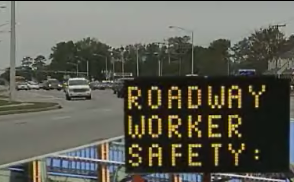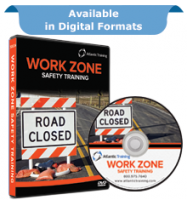
June 24, 2018
Stay safe in roadway work zones

Summer is here, which means the weather is warmer, more people are on the roads and highway construction work is underway. Federal Highway Administration statistics show that 24,745 people died in work zone crashes between 1982 and 2014, and the Bureau of Labor Statistics notes that 1,571 workers were killed at road construction sites between 2003 and 2015.
If you’re a roadway worker
OSHA identifies the following as key elements of temporary traffic control management in highway work zones:
Training. All workers should be instructed on how to work safely near motor vehicle traffic. Additionally, workers with specific responsibilities need to be trained on the correct techniques, device use and placement. Protective clothing. All workers should wear high-visibility apparel that meets OSHA standards. The apparel should be selected by a competent person designated by the supervisor responsible for the roadway worker safety plan. (Go to osha.gov/SLTC/competentperson for more information on what constitutes a “competent person.”) Barriers. Workers should know where to place temporary traffic barriers based on factors such as “lateral clearance of workers from adjacent traffic, speed of traffic, duration and type of operations, time of day, and volume of traffic.” Speed reduction. “Regulatory speed zoning, funneling, lane reduction or the use of uniformed law enforcement officers, or flaggers, should be considered” in an effort to reduce speeding in work zones, OSHA notes. Activity areas. Work zones should be designed to reduce or eliminate the need for vehicles and equipment to back up.
If you’re a driver Odds are that if you drive a vehicle, at some point you’ll drive through a roadway work zone. Follow these safety tips from FHWA:
Pay attention. Keep your eyes on the road and avoid changing the radio station, eating or drinking, or using a cellphone. Keep your headlights on. This will help others see your vehicle. Stay alert. Watch for brake lights on the vehicles ahead and the traffic around you so you are prepared to react, which may include merging into another lane. Refrain from tailgating. Know that traffic patterns in work zones can change daily, so don’t become complacent if you drive the same route every day. Slow down. Always obey posted speed limits, as workers may be only a few feet from your vehicle as your drive through a work zone. Be ready to slow down further if necessary. Be mindful when changing lanes. Do so only where the road markings indicate and if traffic permits. Pay attention to flaggers. Follow their instructions. Prepare for the unexpected. Work zones can change rapidly, and workers and equipment may enter your lane without warning.
Retrieved from Safetyandhealthmagazine.com
 Roadway work is full of potential hazards, from passing traffic and trenches to electrical wires, hearing loss and flying debris. View Product
Roadway work is full of potential hazards, from passing traffic and trenches to electrical wires, hearing loss and flying debris. View Product

 A reminder and review of the different types of signs and signals we use and also proper barricades that help in our accident and injury prevention programs. View Product
A reminder and review of the different types of signs and signals we use and also proper barricades that help in our accident and injury prevention programs. View Product